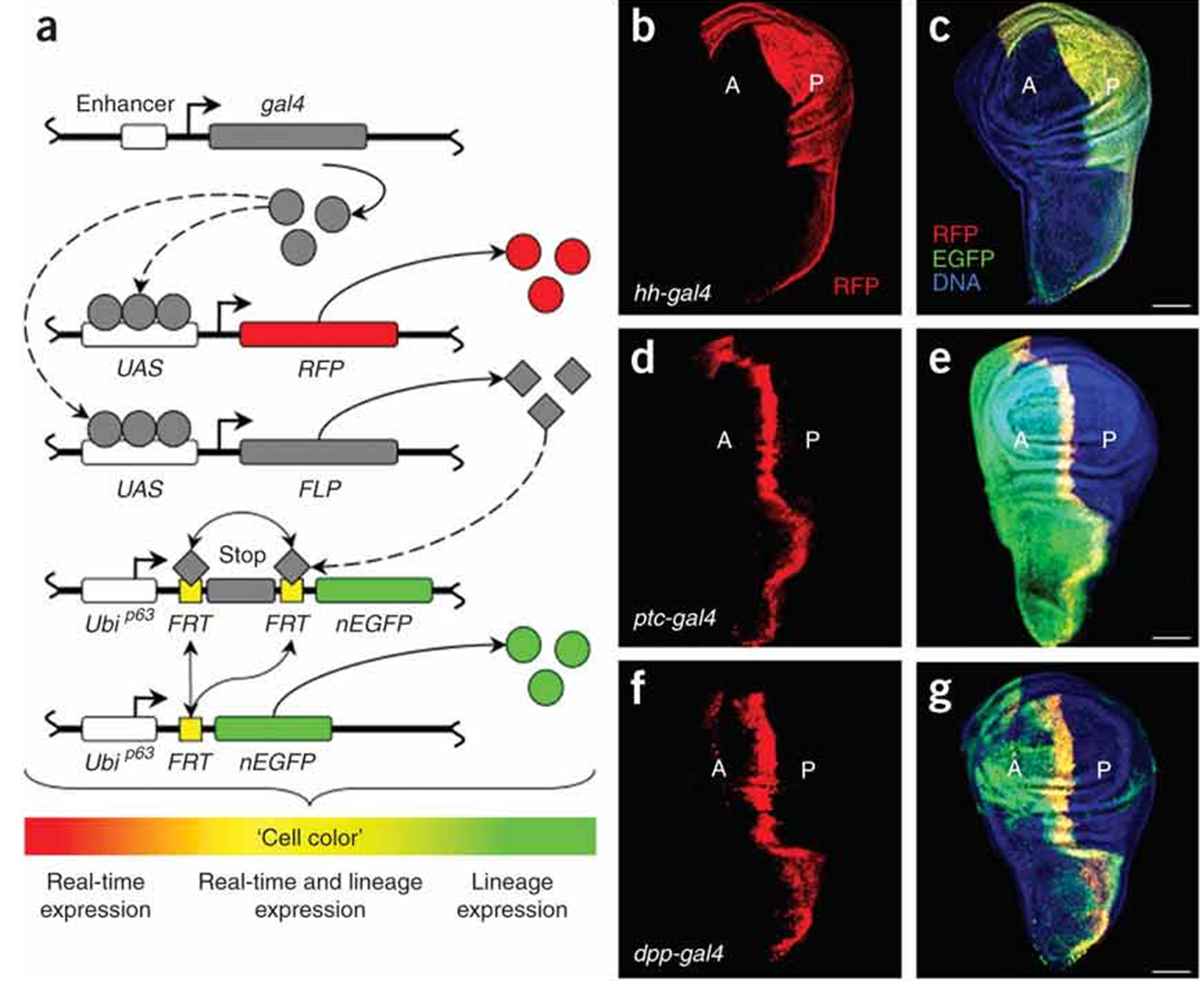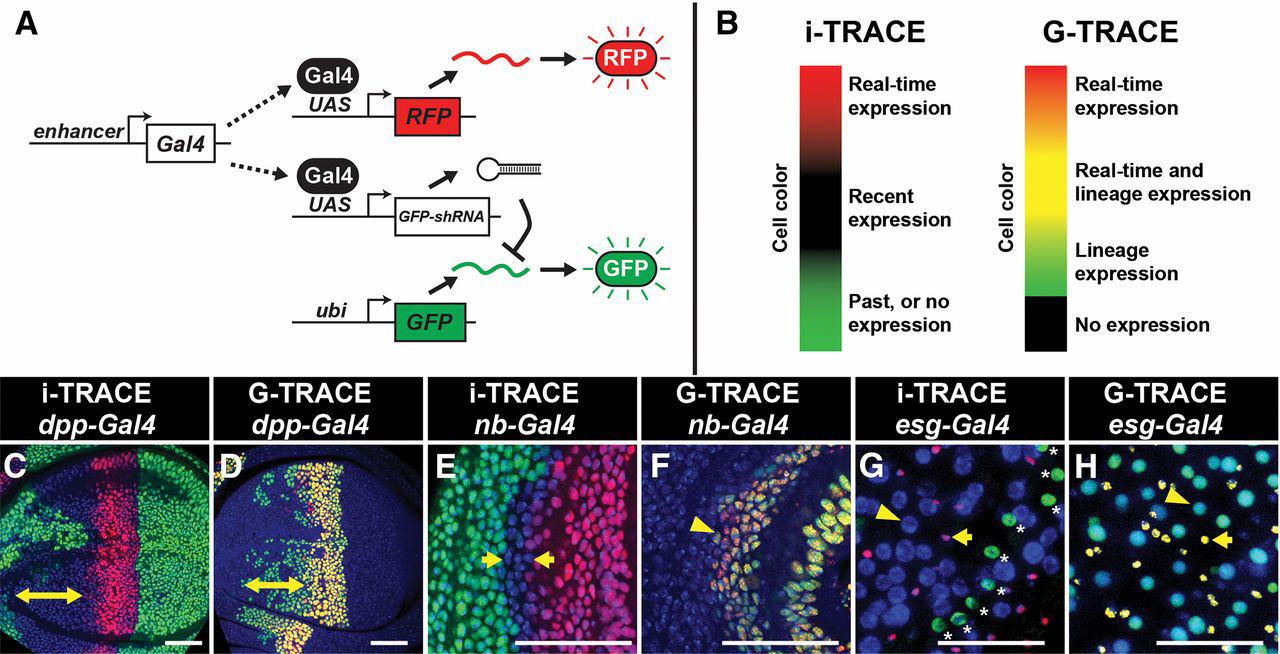G-TRACE (GAL4 Technique for Real-time And Clonal Expression) stocks allow one to generate cell clones that provide spatial, temporal and genetic information about the origins of individual cells. The method is described in Evans et al. (2009): G-TRACE: rapid Gal4-based cell lineage analysis in Drosophila. Nature Methods 6: 603-605.
In the figures below, RFP shows cells currently expressing GAL4 while GFP shows cells that are descendants of cells expressing GAL4 at any time in the history of the lineage.



